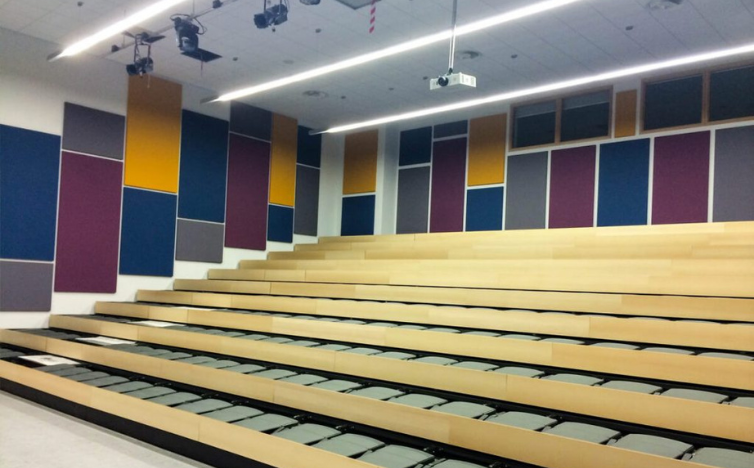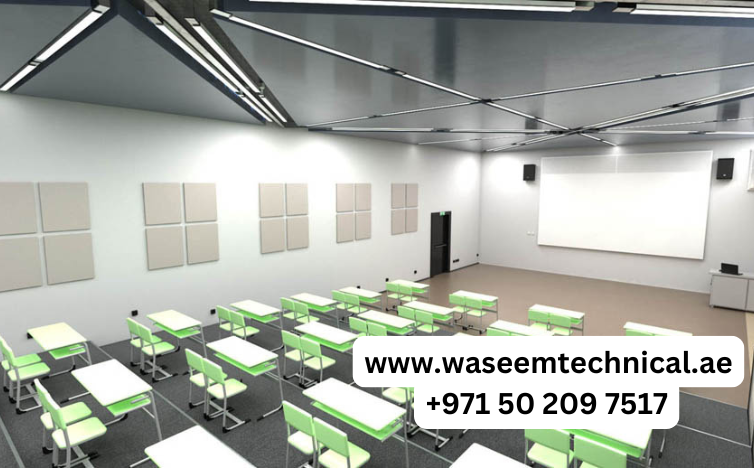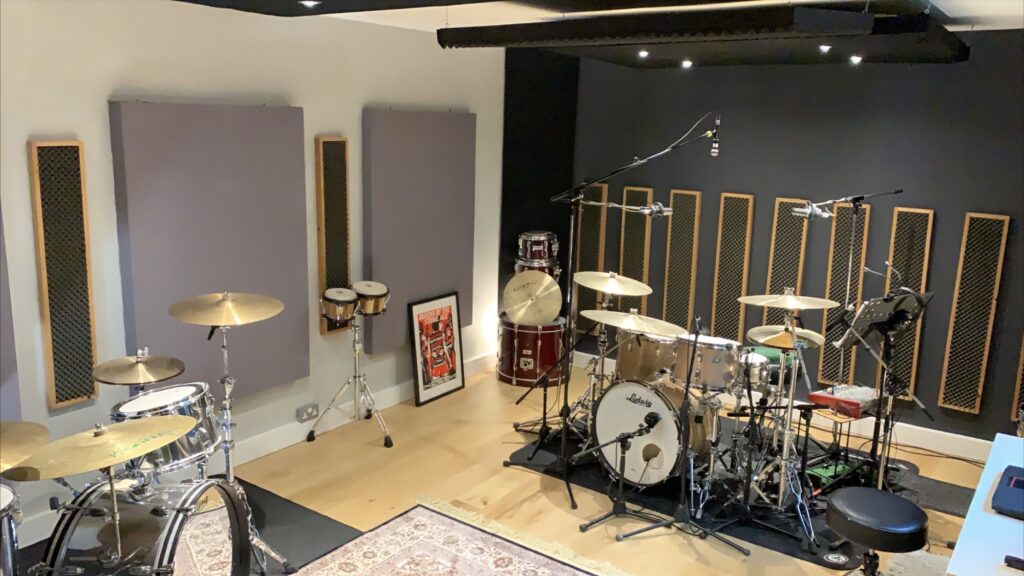Acoustic panels play a crucial role in creating an optimal learning environment by controlling noise levels and improving sound quality in educational spaces. With the right acoustic panels, schools and universities can enhance concentration, communication, and overall academic performance. This article explores the best types of acoustic panels for educational spaces and their benefits.

1. Fabric-Wrapped Acoustic Panels
Overview
Fabric-wrapped acoustic panels are among the most popular choices for educational spaces. These panels are designed with a core material, such as fiberglass or foam, wrapped in a fabric covering. The fabric is available in various colors and patterns, allowing for customization to match the decor of classrooms and lecture halls.
Benefits
These panels effectively absorb mid-to-high frequency sounds, reducing echo and reverberation in large or small rooms. They are also durable and easy to clean, making them ideal for high-traffic areas like schools.
2. Perforated Wood Acoustic Panels
Overview
Perforated wood acoustic panels offer a blend of aesthetics and functionality. These panels are made from wood with small perforations that allow sound waves to pass through and be absorbed by an underlying acoustic material.
Benefits
These panels are particularly effective in spaces where both sound control and visual appeal are important, such as auditoriums or music rooms. The wood finish adds warmth and elegance to the space, while the perforations ensure efficient sound absorption.
3. Polyester Fiber Acoustic Panels
Overview
Polyester fiber acoustic panels are lightweight, versatile, and environmentally friendly. Made from recycled polyester fibers, these panels are both durable and effective in controlling sound.
Benefits
Polyester fiber panels are ideal for schools seeking sustainable options. They are also resistant to moisture and humidity, making them suitable for use in various educational settings, including laboratories and gymnasiums. These panels can be easily cut and shaped to fit any space, offering flexibility in design.
4. Acoustic Ceiling Clouds
Overview
Acoustic ceiling clouds are panels that are suspended from the ceiling to absorb sound from above. These panels are particularly useful in large spaces with high ceilings, such as lecture halls or cafeterias.
Benefits
By reducing noise from overhead, acoustic ceiling clouds help improve speech intelligibility and overall acoustic comfort in busy educational spaces. They are available in various shapes and sizes, allowing for creative installation that complements the room’s design.
5. Acoustic Wall Baffles
Overview
Acoustic wall baffles are vertical panels that hang from walls or ceilings to break up sound waves and reduce noise levels. These baffles are often used in combination with other acoustic treatments to maximize sound control.
Benefits
Acoustic wall baffles are effective in controlling low-frequency sounds that can be difficult to manage with other types of panels. They are ideal for large spaces like gymnasiums, auditoriums, or cafeterias where sound can easily bounce off hard surfaces.
6. Printed Acoustic Panels
Overview
Printed acoustic panels combine sound absorption with visual appeal. These panels can be customized with educational graphics, school logos, or artwork, making them a functional and decorative addition to any educational space.
Benefits
These panels are an excellent choice for creating an engaging learning environment. They help reduce noise while also contributing to the aesthetic and educational goals of the institution.
Call us: Contact Waseem Technical Soundproofing Expert in Dubai For Soundproofing: +971 50 209 7517
Conclusion
Choosing the right type of acoustic panels for educational spaces is essential for creating a conducive learning environment. Whether it’s the versatility of fabric-wrapped panels, the elegance of perforated wood, or the sustainability of polyester fiber panels, each type offers unique benefits that cater to the specific needs of schools and universities. By investing in the right acoustic solutions, educational institutions can significantly enhance the quality of sound and the overall learning experience.




